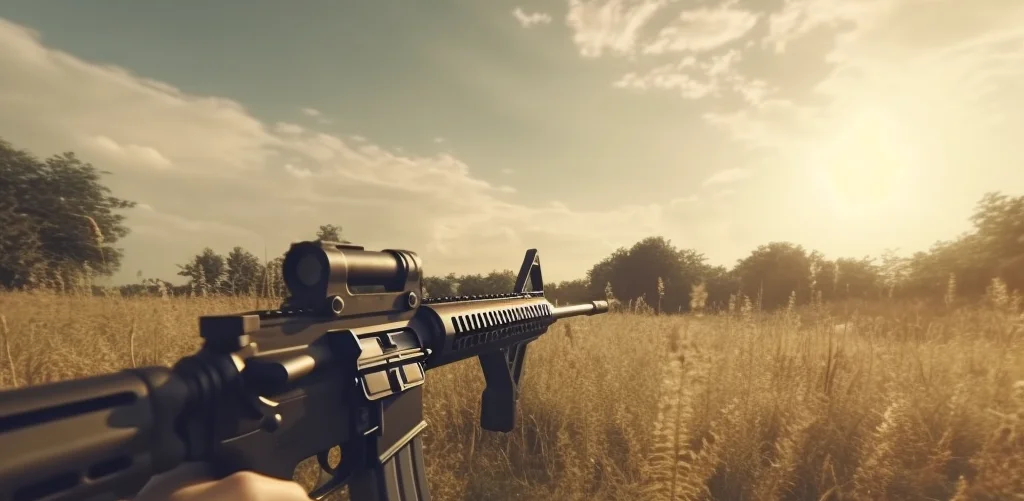
When it comes to responsible gun ownership and safe handling, trigger discipline is crucial. It involves controlling your trigger finger to prevent accidental discharges and keep everyone safe. In this article, we’ll explore the importance of trigger discipline, discuss key principles and techniques, and provide tips to help you develop and maintain this critical aspect of firearm safety. Let’s uncover the secrets of mastering trigger discipline.
Table of Contents
This refers to the conscious and deliberate control of your trigger finger at all times until you are ready to engage the target. It is a fundamental aspect of firearm safety that helps prevent accidental discharges, which can have severe consequences. By mastering trigger discipline, you ensure that your finger remains off the trigger until you have made the conscious decision to fire.
Safe gun handling is built on a set of principles that establish guidelines for ensuring proper and secure firearm practices. These principles include:
To develop and reinforce proper discipline, practice the following techniques:
Improve trigger discipline with these tips:
Mindfulness and focus play crucial roles in mastering trigger discipline. By maintaining present-moment awareness and concentrating on the task at hand, you enhance your ability to control your trigger finger and remain attentive to your firearm handling.
Avoid these mistakes that can compromise trigger discipline:
Proper training and learning are vital in mastering trigger discipline and overall firearm safety. Seek guidance from certified instructors who can teach you safe and effective trigger control techniques.
Dry firing is a useful training technique for improving trigger discipline. It enables you to concentrate on trigger control without any distractions, reinforcing correct technique and building muscle memory. Remember to unload your firearm and follow safety guidelines during dry fire practice.
FAQ 1: Why is trigger discipline important?
This discipline is crucial for preventing unintentional discharges, ensuring the safety of yourself and those around you. By keeping your finger off the trigger until you are ready to shoot, you minimize the risk of accidents and maintain control over your firearm.
FAQ 2: How can I improve my trigger discipline?
To improve trigger discipline, practice techniques such as dry fire exercises, slow and deliberate trigger pulls, and continuous mindfulness of your trigger finger’s position. Seek professional training and regularly reinforce safe handling habits.
FAQ 3: Does trigger discipline apply to all firearms?
Yes, this discipline applies to all firearms, regardless of their type or design. Whether you are handling a handgun, rifle, shotgun, or any other firearm, maintaining control over your trigger finger is essential for safe handling.
FAQ 4: Are there specific techniques for different shooting scenarios?
While the basic rules of trigger safety apply in all shooting situations, the way you handle the trigger may vary depending on the firearm. Learn the specifics of your firearm and adjust your trigger discipline accordingly.
FAQ 5: Can trigger discipline prevent accidents caused by mechanical failures?
While trigger discipline aims to prevent accidental firings due to human error, it can also help identify possible mechanical failures. By keeping your trigger finger in control, you can detect any unexpected trigger movement or resistance, indicating potential firearm malfunctions.
Mastering trigger discipline is crucial for responsible gun ownership and safe handling. By consistently applying this principles, practicing proper techniques, staying focused, and prioritizing safety, you create a safer shooting environment for yourself and others. Seek professional training, stay mindful, and develop a disciplined approach to trigger control for a safe and enjoyable firearms experience.
A hunting rifle is more than just a tool it’s a trusted companion in the…
Choosing the best tree stands under $300 is one of the smartest investments a hunter…
When dark clouds roll in and rain starts falling, many hunters pack up their gear…
Competitive shooting requires skill, precision, and the right equipment. Whether you're a seasoned competitor or…
The world of archery is undergoing an exciting evolution. What once were purely mechanical tools…
Welcome to the latest 2025 hunting-season guide, tailored for readers of TheShootingGears. Whether you’re carving…
This website uses cookies.